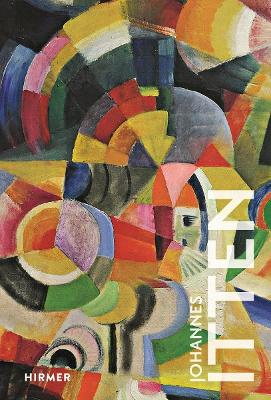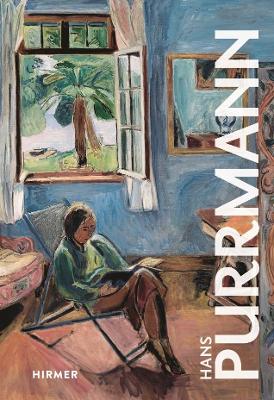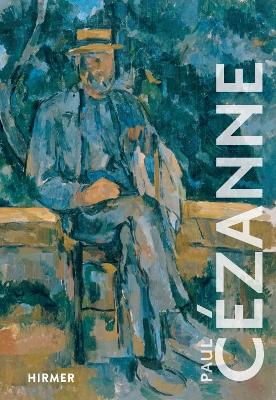The Great Masters of Art
3 total works
When the State Bauhaus opened in Weimar in 1918, the Swiss artist and art theorist Johannes Itten (1888 – 1967) was one of the first teachers to be appointed by Walter Gropius. With his preliminary course, Itten had a considerable effect on the creative training in the Bauhaus; to this day his insights into the theory of colours set standards in art education and in the field of design.
Enquiring mind and lecturer, painter and art teacher – Johannes Itten was a very thoughtful artist personality which was reflected in numerous theoretical texts and artworks covering a wide range of styles. Constantly in dialogue with students and colleagues as well as in a study of other cultures and artistic ideas, Itten created works in which he examined colours, their aura, contrasts and forms. Inspired by Adolf Hölzel, his teacher at the Stuttgart Academy, Itten developed, amongst other things, the famous doctrine of colour types whose significance extends far beyond the realms of art into everyday culture. The acknowledged Itten expert Christoph Wagner introduces the artist with his complex and symbolic work and traces an arc from the revolutionary Bauhaus teacher and founder of various art schools to the art theorist of the theory of colours.
Enquiring mind and lecturer, painter and art teacher – Johannes Itten was a very thoughtful artist personality which was reflected in numerous theoretical texts and artworks covering a wide range of styles. Constantly in dialogue with students and colleagues as well as in a study of other cultures and artistic ideas, Itten created works in which he examined colours, their aura, contrasts and forms. Inspired by Adolf Hölzel, his teacher at the Stuttgart Academy, Itten developed, amongst other things, the famous doctrine of colour types whose significance extends far beyond the realms of art into everyday culture. The acknowledged Itten expert Christoph Wagner introduces the artist with his complex and symbolic work and traces an arc from the revolutionary Bauhaus teacher and founder of various art schools to the art theorist of the theory of colours.
The painter Hans Purrmann (1880–1966) ranks among the most important colourists of twentieth- entury art. Drawing on Henri Matisse and the expressionists, he developed a distinct and acclaimed artistic practice over the course of a life lived in places from Munich to Paris to Berlin to Florence to Switzerland.
Part of the secret of Hans Purrmann’s art is that in his work he translated the visible in a very specific and vibrant manner. With irrepressible curiosity, attentiveness and an unerring eye for beauty and the primal and essential, he produced works whose classification as “representational painting” falls short. In fact, his place in art history is one which continues to offer points of departure for modernism [“einen für die Moderne bis heute anschlussfähigen Rang”: in der Kunst ist die Moderne eine abgeschlossene Epoche]: in 1955 Purrmann was included in documenta I in Kassel, and in 1962 he was the subject of a major retrospective at the Haus der Kunst in Munich which was hailed by the press as a sensation. Based on new sources, Christoph Wagner presents the life and work of Hans Purrmann and places the painter as a prominent protagonist within the coordinates of twentieth-century art history.
Part of the secret of Hans Purrmann’s art is that in his work he translated the visible in a very specific and vibrant manner. With irrepressible curiosity, attentiveness and an unerring eye for beauty and the primal and essential, he produced works whose classification as “representational painting” falls short. In fact, his place in art history is one which continues to offer points of departure for modernism [“einen für die Moderne bis heute anschlussfähigen Rang”: in der Kunst ist die Moderne eine abgeschlossene Epoche]: in 1955 Purrmann was included in documenta I in Kassel, and in 1962 he was the subject of a major retrospective at the Haus der Kunst in Munich which was hailed by the press as a sensation. Based on new sources, Christoph Wagner presents the life and work of Hans Purrmann and places the painter as a prominent protagonist within the coordinates of twentieth-century art history.
His paintbrush set everything in motion: the landscape of Provence, the colourful still lifes, his portraits and the picturesque coast of southern France. More than any other artist, Paul Cézanne, the “Father of Modernism”, captured the light and the play of colours of the South in his pictures and lent them through his new pictorial language a liveliness and dynamism which continue to fascinate viewers to this day.
Paul Cézanne (1839 – 1906) painted the Montagne Sainte-Victoire, a rocky massif near his birthplace Aix-en-Provence, some 80 times. The artist translated the interplay of sunlight and shadow on the constantly changing stone into pictures on the threshold of abstraction. Today they are seen as icons of art history and they underline Cézanne’s reputation as one of the most important pioneers of Classical Modernism. Countless artists, including Matisse, Derain, Picasso, Braque and Léger found inspiration in Cézanne’s ideas on colour modulation and pictorial composition. In this publication the author Christoph Wagner positions Cézanne as an artistic genius who opened up for future generations a completely new view of the world through his paintings and watercolours.
Paul Cézanne (1839 – 1906) painted the Montagne Sainte-Victoire, a rocky massif near his birthplace Aix-en-Provence, some 80 times. The artist translated the interplay of sunlight and shadow on the constantly changing stone into pictures on the threshold of abstraction. Today they are seen as icons of art history and they underline Cézanne’s reputation as one of the most important pioneers of Classical Modernism. Countless artists, including Matisse, Derain, Picasso, Braque and Léger found inspiration in Cézanne’s ideas on colour modulation and pictorial composition. In this publication the author Christoph Wagner positions Cézanne as an artistic genius who opened up for future generations a completely new view of the world through his paintings and watercolours.


